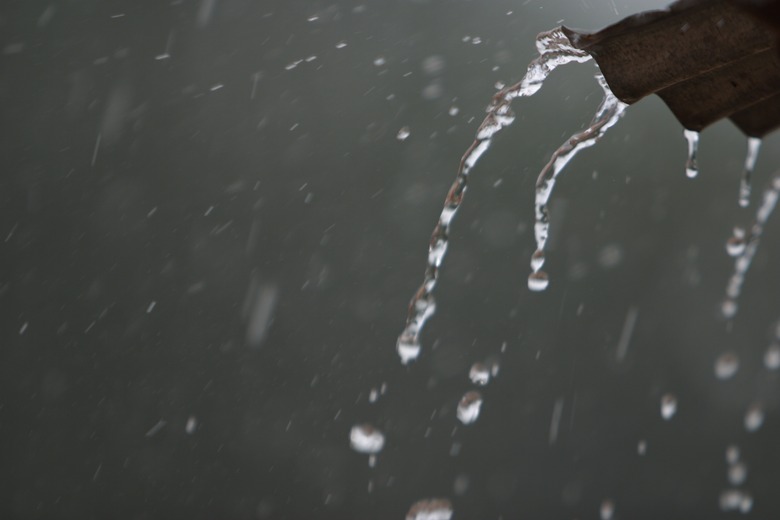When Was The Rain Gauge Invented?
A rain gauge is a simple device that measures the amount of precipitation over a stretch of time. Evidence of rain gauge use stretches back before the Christian era, with ancient Middle Eastern and Asian cultures employing gauges to aid with planting schedules. Today, a device created by Robert Hooke in the mid-1600s is still the basis for modern rain gauges.
Early Rain Gauges
Early Rain Gauges
There are at least two accounts of rain gauges used before the Christian era. The first is from the 4th century B.C. in India, where a state treatise instructed that a rain gauge 45.72 centimeters (18 inches) in diameter was to be used to determine what sort of seeds should be planted. A second record, taken from a Jewish text, shows that the rainfall in parts of Palestine was 54 centimeters (21.26 inches) annually, though it's unclear if that was for one year or a combination of years. Clearly, though, they were employing some sort of rain gauge to measure rainfall.
Rain Gauges in Middle Ages
Rain Gauges in Middle Ages
Starting in 1200, the use of rain gauges spread throughout Asia. Texts reveal that the Chinese in particular were interested in the amount of rainfall occurring, as they installed rain gauges in major cities. The amount of rain that fell in these locations was used to estimate the amount of rain happening throughout the country. Korea, too, used gauges whose design did not alter much from the 15th century through the 20th century. According to researchers at the Royal Meteorology Society, these gauges were very advanced and nothing of the sort was used in Europe.
Rain Gauges in Europe in the 1600s
Rain Gauges in Europe in the 1600s
Not long after Galileo's student Benedetto Custelli made the first recorded modern rain gauge measurement in 1639, Robert Hooke designed a rain gauge that is similar to what is still in use today. The top is funnel-shaped, and the water is directed down to a collecting basin. Hooke's gauge was in use for one year in London and collected 74 centimeters (29 inches) of water. Elsewhere in Britain, Richard Towneley made the first extended measurements with a gauge, recording the rainfall in northern England over the course of 15 years.
Modern Rain Gauges
Modern Rain Gauges
Rain gauges today range from simple plastic tubes to fully automated devices. Researchers have also developed a set of ideal rain gauge placement instructions, including having the gauge in an open area free of obstacles, and fairly close to the ground, where the wind is less severe. Several projects collect data from rain gauge users to get a better idea of precipitation across a large area, such as the program run by North Dakota State University. Today rain gauges are not only used for measuring precipitation amounts. The rainfall collected is also measured for contaminants, especially those that are indicative of acid rain.
Benefits of Using Rain Gauges and Measuring Rainfall
Benefits of Using Rain Gauges and Measuring Rainfall
The amount of rain that falls in a given area can vary drastically based on where you live. Rainfall has important implications to farmers. Farmers of today and farmers from centuries ago alike rely upon rainfall to provide water for their crops. Rain gauges can help farmers determine the best time of year to plant their crops, what type of crops to plant and the types or amount of irrigation systems necessary to keep those crops alive.
Rain gauges also provide important information to meteorologists in predicting weather patterns based on historical rainfall records. They also help engineers understand how much rainfall a given area typically receives so that they can plan stormwater structures to control the water diverted by impervious surfaces such as roads and sidewalks.
Cite This Article
MLA
Michelle, Meg. "When Was The Rain Gauge Invented?" sciencing.com, https://www.sciencing.com/rain-gauge-invented-23359/. 1 December 2021.
APA
Michelle, Meg. (2021, December 1). When Was The Rain Gauge Invented?. sciencing.com. Retrieved from https://www.sciencing.com/rain-gauge-invented-23359/
Chicago
Michelle, Meg. When Was The Rain Gauge Invented? last modified March 24, 2022. https://www.sciencing.com/rain-gauge-invented-23359/
